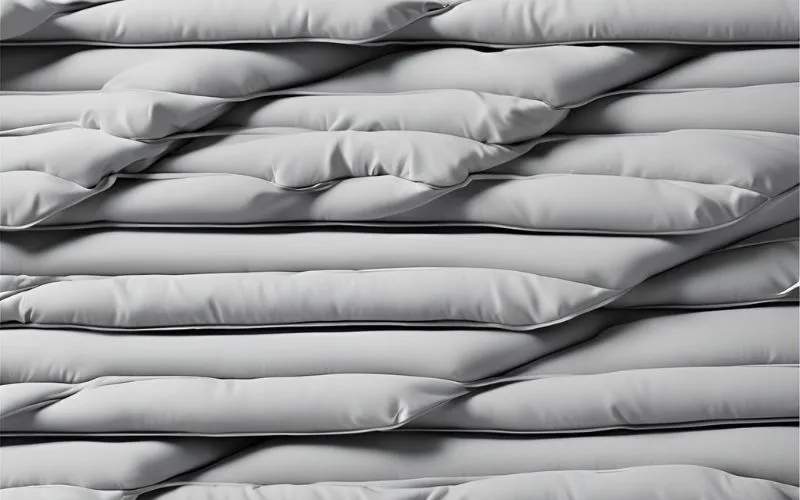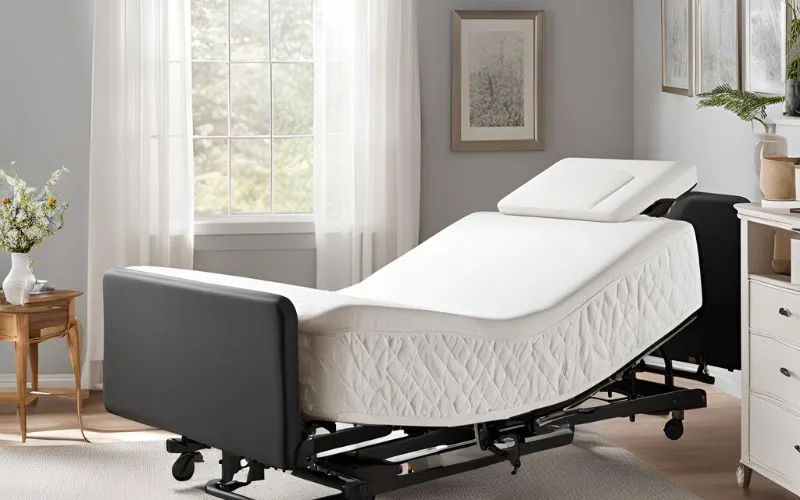Effective Strategies for Preventing Pressure Sores with Adjustable Beds

Introduction
Welcome to our comprehensive guide to preventing pressure sores with adjustable beds. In this article, we will explore the causes, risk factors, and effective strategies for preventing pressure sores. We will also delve into the role of adjustable beds in preventing pressure sores and provide valuable insights on selecting the right adjustable bed. By the end of this guide, you will have a deeper understanding of how adjustable beds can play a crucial role in maintaining skin health and preventing pressure sores.
Understanding Pressure Sores
What are Pressure Sores?
Pressure sores, also known as bedsores, are injuries to the skin and underlying tissue caused by prolonged pressure on the skin. They often develop in areas where the bones are close to the skin surface, such as the hips, heels, and tailbone. These sores can range from mild reddening of the skin to severe tissue damage and are a common concern for individuals with limited mobility or those who spend long periods in bed or in a chair.
Causes of Pressure Sores
Pressure sores, also known as bedsores, can develop due to various factors that impact the skin and underlying tissues. These causes include:
- Prolonged Pressure: Continuous pressure on specific areas of the body, especially bony prominences, can lead to reduced blood flow and tissue damage.
- Friction: When the skin rubs against bedding, clothing, or other surfaces, it can cause abrasions and skin irritation, contributing to the development of pressure sores.
- Shear: Shear occurs when the skin moves in one direction while the underlying bone structure moves in the opposite direction. This motion can cause damage to the underlying tissues, increasing the risk of pressure sore formation.
- Mobility Limitations: Individuals with limited mobility, such as those confined to a wheelchair or bed, are at higher risk of developing pressure sores due to prolonged pressure on specific areas.
- Poor Circulation: Conditions that affect blood flow, such as diabetes or cardiovascular disease, can impede the body’s ability to deliver nutrients and oxygen to the skin, increasing the vulnerability to pressure sore development.
- Moisture and Incontinence: Prolonged exposure to moisture from sweat or incontinence can weaken the skin and make it more susceptible to damage, contributing to the formation of pressure sores.
Risk Factors
- Immobilization: Prolonged periods of immobility, whether due to illness, injury, or sedentary lifestyle, can significantly increase the risk of developing pressure sores.
- Poor Nutrition: Inadequate intake of essential nutrients, especially protein and vitamins, can impair the body’s ability to repair and maintain healthy skin, making individuals more susceptible to pressure sores.
- Moisture: Excessive moisture, whether from perspiration, urinary incontinence, or other sources, can soften the skin and make it more vulnerable to damage from pressure.
- Medical Conditions: Certain medical conditions that affect blood flow or sensation, such as diabetes, peripheral vascular disease, and spinal cord injuries, can heighten the risk of pressure sore development.
Role of Adjustable Beds in Preventing Pressure Sores
How Adjustable Beds Help in Pressure Sore Prevention
Adjustable beds play a crucial role in preventing pressure sores by providing customizable support and promoting proper body positioning. By adjusting the angle of the bed, pressure can be distributed more evenly, reducing the risk of prolonged pressure on specific areas of the skin. Additionally, adjustable beds allow for easy repositioning, which can alleviate pressure on vulnerable areas and help maintain skin integrity.
- Enhanced Blood Circulation: Adjustable beds promote better blood flow by allowing users to elevate their legs and upper body, reducing pressure on key areas and promoting proper circulation.
- Reduced Pain and Discomfort: The ability to adjust the bed to various positions can alleviate pain and discomfort, especially for individuals with musculoskeletal conditions such as arthritis or back pain.
- Customized Comfort: Users can personalize their sleep or resting positions, enhancing overall comfort and reducing the likelihood of developing pressure sores.
Choosing the Right Adjustable Bed
When it comes to choosing the right adjustable bed for pressure sore prevention, there are several crucial factors to consider. A thoughtful selection can significantly contribute to the overall comfort and well-being of the individual. Below are key points to keep in mind when selecting an adjustable bed:
- Mattress Type:The type of mattress plays a vital role in pressure sore prevention. Consider options such as foam, air, or hybrid mattresses, each offering unique benefits for pressure redistribution and comfort.
- Width and Support Features: The width of the bed and the support features are essential considerations. A wider bed allows for better positioning and movement, while advanced support features like adjustable elevation and firmness settings can provide tailored support and reduce pressure points.
- Pressure Redistribution: Look for a mattress that offers superior pressure redistribution to minimize the risk of pressure sores. This is especially important for individuals with limited mobility and prolonged bed rest.
By carefully evaluating these factors, individuals and caregivers can make an informed decision to select an adjustable bed that not only supports pressure sore prevention but also enhances the overall quality of rest and sleep.
Effective Strategies for Preventing Pressure Sores
Regular Repositioning
Regular Repositioning
Regular repositioning is a fundamental strategy for preventing pressure sores, especially for individuals with limited mobility. By changing positions frequently, pressure on specific areas of the skin is relieved, reducing the risk of tissue damage. This strategy is particularly important for individuals who spend extended periods in bed or in a seated position.
- Change positions at least once every two hours to alleviate pressure on the skin.
- Use pillows or cushions to support different parts of the body during repositioning.
- When seated, shift weight from one side to the other or use a recliner to change positions.
Skin Care and Hygiene
Proper skin care and hygiene are essential in preventing pressure sores. Keeping the skin clean, dry, and moisturized can help maintain skin integrity and reduce the risk of developing sores. Additionally, using appropriate cushions and padding can further protect vulnerable areas from pressure and friction.
Nutrition and Hydration
Nutrition and hydration are crucial components in the prevention of pressure sores. A well-rounded approach to nutrition that encompasses a balanced diet rich in protein, vitamins, and minerals is essential for promoting skin health and facilitating tissue repair. Adequate hydration is equally vital, as it helps to maintain skin moisture and elasticity, thereby reducing the risk of pressure sores. Let’s delve deeper into each aspect to understand their significance in preventing pressure sores:
- Nutrition:
- When it comes to nutrition, protein takes center stage as it plays a pivotal role in the body’s healing process. This macronutrient is essential for repairing damaged tissues and maintaining muscle mass, both of which are critical for preventing pressure sores. In addition to protein, a varied intake of vitamins and minerals is necessary to bolster the body’s immune system and enhance tissue regeneration. For instance, vitamin C aids in collagen synthesis, while zinc supports the healing of wounds. Including foods rich in these nutrients, such as lean meats, fish, dairy products, fruits, and vegetables, can significantly contribute to warding off pressure sores.
- Hydration:
- Hydration is a key factor in maintaining skin health and integrity. Proper fluid intake ensures that the skin remains supple and less prone to damage. Water is the primary constituent of the body, and adequate consumption of it aids in cellular function, including skin cell regeneration. Furthermore, staying well-hydrated supports the body’s ability to transport essential nutrients to the skin, fostering its overall health and resilience against pressure sores. It’s important to note that factors such as age, activity level, and existing health conditions can influence an individual’s hydration needs. Therefore, tailoring fluid intake to meet specific requirements is vital for effective pressure sore prevention.
Using Support Surfaces
Utilizing support surfaces, such as pressure-relieving mattresses and cushions, contributes to pressure sore prevention. These surfaces help distribute pressure more evenly, reduce friction, and promote comfort, thereby minimizing the risk of skin breakdown. Selecting the appropriate support surface based on individual needs is essential for effective prevention.
- Pressure-relieving mattresses are designed to minimize pressure on bony prominences and distribute weight more evenly.
- Cushions with gel or foam padding help reduce friction and provide a comfortable sitting surface.
- Air-filled support surfaces, such as alternating pressure mattresses, assist in preventing prolonged pressure on specific areas and encourage circulation.
It’s essential to assess the individual’s needs to determine the most suitable support surface. Factors to consider include mobility, sensation, tissue tolerance, and preference.
Importance of Exercise
In addition to preventing pressure sores, regular exercise has numerous other benefits for individuals with limited mobility. It promotes blood circulation, muscle strength, and overall well-being, all of which are crucial for maintaining healthy skin and reducing the risk of pressure sores. Let’s explore the importance of exercise in more detail:
- Enhanced Circulation: Exercise increases blood flow to the skin, delivering essential nutrients and oxygen while removing waste products. This process aids in the maintenance of healthy skin and reduces the likelihood of pressure sore development.
- Muscle Strength: Engaging in tailored exercise routines helps build and maintain muscle strength, which is particularly beneficial for individuals with limited mobility. Strong muscles provide vital support to the body, helping to alleviate pressure on vulnerable areas and reduce the risk of sores.
- Emotional Well-being: Regular physical activity contributes to improved mental health and emotional well-being. It boosts self-esteem, reduces anxiety, and provides a sense of achievement, all of which are important for individuals managing mobility challenges.
- Reduced Risk of Complications: Exercise plays a key role in reducing the risk of secondary health complications, such as circulation-related issues and musculoskeletal problems, that can exacerbate the development of pressure sores.
Incorporating exercise into a daily routine not only helps prevent pressure sores but also contributes to an enhanced quality of life for individuals with limited mobility.
Conclusion
In conclusion, preventing pressure sores with adjustable beds involves a multifaceted approach that encompasses understanding the causes and risk factors, implementing effective strategies, and leveraging the benefits of adjustable beds. By addressing the root causes of pressure sores and integrating preventive measures, individuals can maintain skin integrity and overall well-being. The role of adjustable beds in pressure sore prevention is significant, offering personalized support and adaptability to meet diverse needs. With the right knowledge and proactive measures, the incidence of pressure sores can be minimized, promoting comfort and health for individuals at risk.




